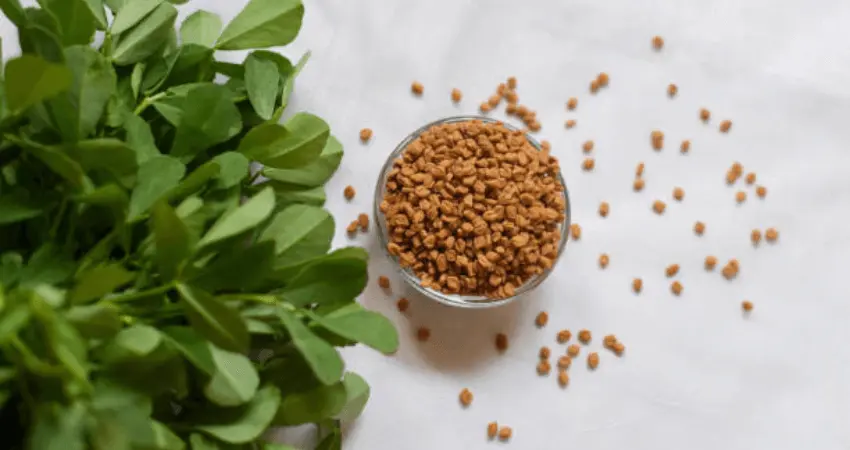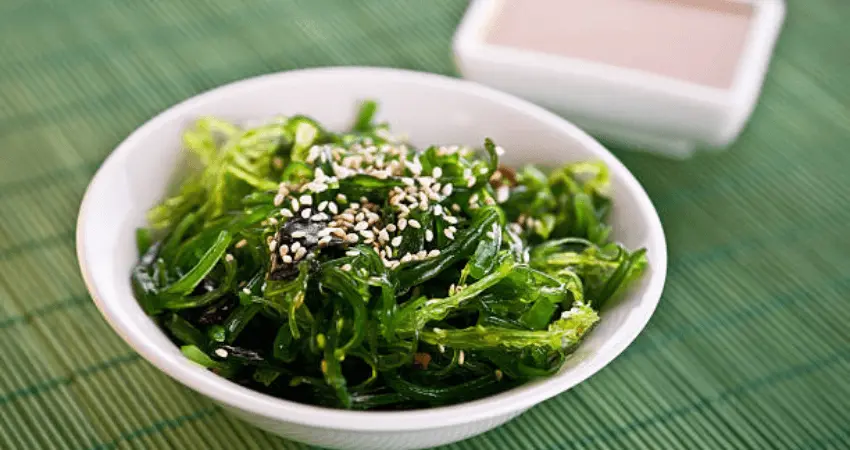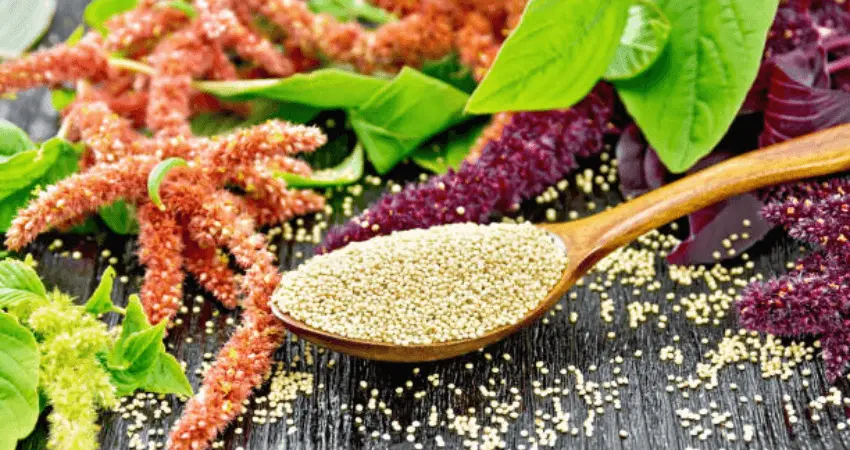- The Health Benefits of Forgotten Superfoods
- What Are Forgotten Superfoods?
- The Historical Significance of Forgotten Superfoods
- Culinary Delights with Forgotten Superfoods
- Sourcing and Storing Forgotten Superfoods
- Sustainability and Forgotten Superfoods
- Conclusion: Embrace the Rich Legacy and Sustainable Future of Forgotten Superfoods
- Frequently Asked Questions (FAQs)
In the bustling world of nutrition, certain foods often take the spotlight, while others languish in obscurity. However, it’s time to shed light on the unsung heroes of the culinary world – the Forgotten Superfoods.
These dietary treasures hold immense potential for enhancing your health and well-being. In this comprehensive guide, we’ll delve deep into the world of these underappreciated wonders, exploring their unique benefits, and culinary uses, and answering your most pressing questions.
The Health Benefits of Forgotten Superfoods
The obscurity of forgotten superfoods doesn’t diminish their remarkable health benefits. In fact, these often-overlooked dietary gems offer a wide array of advantages for those who include them in their meals regularly. Here’s a closer look at some of the key health benefits you can reap:

1. Enhanced Nutrient Intake
Forgotten Superfoods are nutrient powerhouses. They are rich in essential vitamins, minerals, and antioxidants that contribute to overall health. By incorporating these foods into your diet, you can increase your nutrient intake and support your body’s various functions.
2. Improved Digestive Health
Many Forgotten Superfoods are excellent sources of dietary fiber. Fiber aids in digestion, promotes regular bowel movements, and supports a healthy gut microbiome. This can help prevent constipation and may lower the risk of digestive disorders.
3. Weight Management
Several Forgotten Superfoods, such as chia seeds and amaranth, are high in fiber and protein. These nutrients can help you feel fuller for longer, reducing the likelihood of overeating and supporting weight management efforts.
4. Heart Health
Buckwheat and other whole grains among Forgotten Superfoods contain heart-healthy compounds. They can help lower cholesterol levels, reduce blood pressure, and decrease the risk of cardiovascular diseases.
5. Blood Sugar Control
Millet, with its low glycemic index, is a valuable addition to diets for individuals with diabetes or those concerned about blood sugar levels. It can help stabilize blood sugar and provide sustained energy.
6. Bone Health
Teff, a small but mighty grain, is an excellent source of calcium. Calcium is crucial for maintaining strong bones and teeth. Incorporating Teff into your diet can contribute to better bone health, especially for individuals who are lactose intolerant.
7. Skin and Hair Health
Seaweed, a Forgotten Superfood from the ocean, is rich in antioxidants like vitamins A and C. These nutrients are known for their skin and hair benefits, potentially promoting a healthy complexion and strong, shiny hair.
8. Thyroid Support
The iodine content in seaweed can support thyroid function. Iodine is essential for the production of thyroid hormones, which regulate metabolism and energy levels.
9. Mood and Cognitive Function
Certain Forgotten Superfoods, like quinoa, contain amino acids that can contribute to improved mood and cognitive function. They provide the building blocks for neurotransmitters that affect mood and mental clarity.
10. Versatile Culinary Options
Beyond their health benefits, Forgotten Superfoods can add variety and excitement to your meals. Experimenting with these unique ingredients can make your diet more interesting and enjoyable.
Incorporating Forgotten Superfoods into your daily meals can be a delicious and healthful way to support your overall well-being. Whether you’re looking to boost your nutrient intake, manage your weight, or promote specific aspects of your health, these culinary treasures have much to offer.
What Are Forgotten Superfoods?

Before we dive into the specifics, let’s define what we mean by “Forgotten Superfoods.” These are nutrient-dense foods that have faded from the limelight over the years but pack a powerful nutritional punch.
More popular counterparts often overshadow them, yet they offer many health benefits that shouldn’t be underestimated.
Rediscovering Amaranth: The Ancient Grain
Amaranth: An Age-Old Marvel Amaranth, a gluten-free ancient grain, has been cultivated for thousands of years. It boasts an impressive nutritional profile, with high levels of protein, fiber, and essential amino acids. This grain’s versatility in the kitchen makes it an ideal choice for those seeking to add variety to their diet.
Amaranth Recipes and Culinary Inspiration
- Amaranth Porridge with Fresh Berries
- Amaranth-Crusted Chicken Tenders
Buckwheat: The Unsung Hero of Whole Grains
Buckwheat’s Nutritional Bounty Often mistaken for a cereal grain, buckwheat is, in fact, a pseudocereal. It’s rich in antioxidants, vitamins, and minerals, making it a nutritional powerhouse. The inclusion of buckwheat in your diet can support heart health and aid in managing blood sugar levels.
Incorporating Buckwheat into Your Meals
- Buckwheat Pancakes with Maple Syrup
- Buckwheat Salad with Roasted Vegetables
Millet: Small But Mighty
Millet’s Nutrient Density Millet is a small, often overlooked grain that is a staple in many parts of the world. It’s a great source of essential minerals like magnesium and phosphorus. Additionally, millet’s low glycemic index makes it an excellent choice for those watching their blood sugar.
Millet in Your Kitchen
- Millet and Vegetable Stir-Fry
- Millet Breakfast Bowl with Nuts and Dried Fruits

Teff: Tiny but Packed with Nutrients
Teff’s Nutritional Brilliance Teff, the world’s smallest grain, hails from Ethiopia and Eritrea. Don’t let its size fool you; it’s a nutritional giant. Teff is an excellent source of calcium, iron, and resistant starch, making it a stellar choice for a balanced diet.
Creative Teff Culinary Ideas
- Teff Injera: A Spongy Ethiopian Flatbread
- Teff and Veggie Bowl with Tahini Dressing
The Power of Seaweed: Nature’s Nutrient-Rich Gift
Seaweed’s Ocean of Benefits While not a typical staple in Western diets, seaweed deserves a place on your plate. It’s a fantastic source of iodine, essential for thyroid health. Additionally, it’s rich in vitamins, minerals, and antioxidants.
Ways to Enjoy Seaweed
- Seaweed Salad with Sesame Dressing
- Sushi Rolls with Nori Seaweed
The Historical Significance of Forgotten Superfoods
Understanding the history behind Forgotten Superfoods sheds light on why they’ve been cherished for centuries and why they’re making a comeback in modern diets.
Amaranth: A Sacred Aztec Crop
- Amaranth holds a special place in Aztec culture, where it was considered a staple food and a sacred crop. Its resilience and exceptional nutritional value made it crucial for sustenance.
Buckwheat: A Staple in Asia and Europe
- Buckwheat has been a dietary staple in regions like Asia and Eastern Europe for centuries. Its adaptability to various climates and soils made it a valuable crop.
Millet: A Global Grain
- Millet’s history spans across continents, from Africa to Asia. It’s been a staple in the diets of many ancient civilizations due to its hardiness and nutritional content.
Teff: The Pride of Ethiopia
- Teff has been a dietary cornerstone in Ethiopia for thousands of years. It’s the main ingredient in injera, a sourdough flatbread, and plays a vital role in Ethiopian cuisine.
Seaweed: A Culinary Tradition in East Asia
- Seaweed has been part of East Asian diets for centuries, particularly in Japan and Korea. Its rich nutrient profile has contributed to the longevity of these populations.
Rediscovering the historical significance of Forgotten Superfoods not only connects us to our culinary heritage but also highlights their enduring value in promoting health and nutrition.
These ancient foods continue to enrich our diets and offer a window into the past as we embrace them in our modern meals.
Culinary Delights with Forgotten Superfoods

Embracing Forgotten Superfoods in your culinary adventures can be both nutritious and delightful. Here, we’ll explore some creative and delicious ways to make these nutritional powerhouses a regular part of your diet.
1. Superfood Smoothie Bowls
Start your day with a burst of nutrition by blending amaranth, a handful of mixed berries, and a ripe banana with your choice of milk or yogurt. Top it off with chia seeds and sliced almonds for added texture and a protein boost. This superfood-packed smoothie bowl will keep you energized throughout the morning.
2. Buckwheat Pancakes
Swap out traditional pancake mix for buckwheat flour to create hearty, gluten-free pancakes. These pancakes are not only delicious but also rich in fiber and nutrients. Top them with Greek yogurt and a drizzle of honey for a delightful breakfast.
3. Millet-Stuffed Bell Peppers
Prepare a savory and nutrient-packed filling by sautéing millet with vegetables and your choice of seasonings. Stuff the mixture into bell peppers, sprinkle with cheese and bake until golden brown. It’s a fantastic way to enjoy millet’s nutty flavor.
4. Teff Porridge with a Twist
Start your day with a warm bowl of teff porridge. Add diced dried fruits, a sprinkle of cinnamon, and a dollop of almond butter for a satisfying and flavorful breakfast. The creaminess of teff porridge is sure to become a morning favorite.
5. Seaweed Wraps
Get creative with your lunch by making seaweed wraps. Fill nori sheets with a mixture of quinoa, avocado, cucumber, and your choice of protein (such as tofu or grilled chicken). Roll them up for a nutritious and portable meal.
6. Superfood Salad Bowl
Create a colorful salad with a mix of Forgotten Superfoods. Combine cooked amaranth, quinoa, and millet with a variety of fresh vegetables, such as cherry tomatoes, spinach, and bell peppers. Drizzle with a homemade tahini dressing for a flavorful and filling salad.
7. Chia Seed Pudding
Indulge your sweet tooth with a guilt-free chia seed pudding. Mix chia seeds with your choice of milk and sweetener, then let it sit in the fridge overnight. Top it with fresh fruit and a sprinkle of cinnamon for a satisfying dessert or snack.
8. Superfood Sushi Rolls
Create your own sushi rolls at home by using seaweed sheets as wrappers. Fill them with a combination of cooked quinoa, avocado, cucumber, and your favorite seafood or vegetables. Serve with soy sauce and pickled ginger for an authentic sushi experience.
By infusing your meals with Forgotten Superfoods, you not only elevate the nutritional value of your diet but also explore new and exciting flavors. Experiment with these culinary ideas to discover your favorite ways to enjoy these dietary treasures in your daily life.
Sourcing and Storing Forgotten Superfoods

Now that you’re eager to include Forgotten Superfoods in your diet, let’s ensure you have the knowledge to source and store them properly for maximum freshness and nutritional value.
1. Finding Forgotten Superfoods
- Local Health Food Stores: Start your search at local health food stores, as they often carry a selection of Forgotten Superfoods in various forms, from grains to seeds and seaweed.
- Online Retailers: Explore online retailers specializing in organic and healthy foods. They offer a wide range of options and the convenience of doorstep delivery.
- Farmers’ Markets: Some local farmers’ markets may also carry these unique superfoods, particularly ancient grains like amaranth and millet.
2. Check Packaging and Labels
- When purchasing packaged Forgotten Superfoods, check for certifications such as organic, non-GMO, and fair trade. These certifications ensure higher quality and ethical sourcing.
3. Proper Storage
- Cool and Dry: Most Forgotten Superfoods, like grains and seeds, should be stored in a cool, dry place, away from direct sunlight. An airtight container is ideal for maintaining freshness.
- Seaweed Storage: For seaweed, it’s best to keep it in an airtight container in a cool, dark place. Moisture can cause it to lose its crispness, so consider adding a desiccant pack.
- Refrigeration: In hot and humid climates, it’s advisable to refrigerate certain superfoods to extend their shelf life. This is especially true for seeds like chia and flax.
4. Buying in Bulk
- If you plan to incorporate Forgotten Superfoods into your diet regularly, consider buying in bulk. This can be cost-effective and reduce packaging waste.
5. Experiment with Recipes
- As you source these unique superfoods, be prepared to experiment with new recipes. Incorporating them into your meals may require a bit of culinary creativity, but the results are worth it.
6. Join Online Communities
- Engage with online communities and forums dedicated to healthy eating and superfoods. These platforms often provide recommendations on where to source specific items and share recipe ideas.
By keeping these sourcing and storage tips in mind, you can ensure that your Forgotten Superfoods remain fresh and ready to elevate your meals with their incredible nutritional benefits.
Enjoy your journey of discovery and nourishment as you explore these hidden treasures of the culinary world
Sustainability and Forgotten Superfoods
In an era where sustainability is at the forefront of dietary choices, Forgotten Superfoods emerge as eco-friendly options with numerous benefits for both the planet and its inhabitants.
Reduced Environmental Impact
- Forgotten Superfoods often require fewer resources such as water and pesticides compared to mainstream crops. For instance, amaranth is drought-tolerant, reducing water usage, and millet is naturally pest-resistant, minimizing the need for chemical treatments.
Biodiversity and Crop Rotation
- Incorporating Forgotten Superfoods into agricultural practices promotes crop diversity and rotation. This helps maintain healthy soils and reduces the risk of soil depletion and erosion.
Resilience to Climate Change
- Many Forgotten Superfoods are adapted to harsh growing conditions, making them more resilient to climate change. Buckwheat, for example, thrives in cool climates, offering a stable food source in regions susceptible to temperature fluctuations.
Supporting Local Farmers
- Cultivating Forgotten Superfoods often involves smaller-scale, local farming practices. This supports local economies and helps maintain traditional agricultural knowledge.
Reduced Food Waste
- Forgotten Superfoods can have a longer shelf life and are less prone to spoilage compared to some more common crops. This can contribute to reducing food waste, a significant issue in many parts of the world.
As the world recognizes the importance of sustainable food choices, the resurgence of Forgotten Superfoods provides a solution that aligns with both ecological and nutritional needs. Incorporating these eco-friendly options into your diet not only benefits your health but also contributes to a more sustainable and resilient food system
Conclusion: Embrace the Rich Legacy and Sustainable Future of Forgotten Superfoods
In the world of nutrition, it’s easy for certain foods to be overshadowed by more popular choices. However, as we’ve explored in this guide, Forgotten Superfoods are not only rich in nutritional value but also steeped in history and sustainability. They carry the legacy of ancient cultures and offer a path towards a more eco-conscious and diverse diet.
By incorporating Forgotten Superfoods such as amaranth, buckwheat, millet, teff, and seaweed into your daily meals, you not only elevate your nutrient intake but also connect with the culinary traditions of the past. These dietary treasures continue to enrich our diets, providing a glimpse into the diverse and resilient foods that have sustained civilizations for generations.
Moreover, as we face the challenges of a changing climate and a growing global population, the sustainability of our food choices has become paramount. Forgotten Superfoods, with their ability to thrive in diverse environments, reduced environmental impact, and support for local farming communities, offer a sustainable path forward.
So, it’s time to expand your culinary horizons, connect with the historical roots of food, and make eco-conscious choices by embracing the Forgotten Superfoods. They not only nourish your body but also contribute to a healthier planet and a brighter culinary future for all.
Frequently Asked Questions (FAQs)
1. Are Forgotten Superfoods expensive and hard to find?
- While some may be less common, many Forgotten Superfoods are readily available at health food stores and online markets. Prices vary, but they can be incorporated into your diet affordably.
2. Can I eat Forgotten Superfoods if I have dietary restrictions or allergies?
- Most Forgotten Superfoods are gluten-free and can be included in gluten-free and allergy-friendly diets. However, always check product labels for allergen information.
3. Do Forgotten Superfoods have any potential side effects?
- These foods are generally safe when consumed in moderation as part of a balanced diet. However, like any food, overconsumption can lead to digestive discomfort.
4. Can Forgotten Superfoods help with weight loss?
- Some Forgotten Superfoods, like chia seeds, can aid in weight management due to their high fiber content. However, a holistic approach to weight loss is recommended.
5. Are there any cooking tips for preparing Forgotten Superfoods?
- Cooking methods vary depending on the food. Experiment with recipes to discover your favorite way to incorporate these nutritious gems into your meals.




